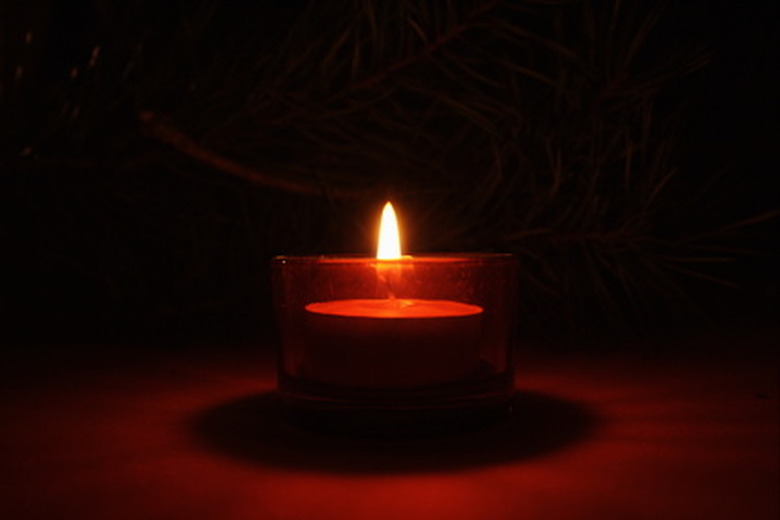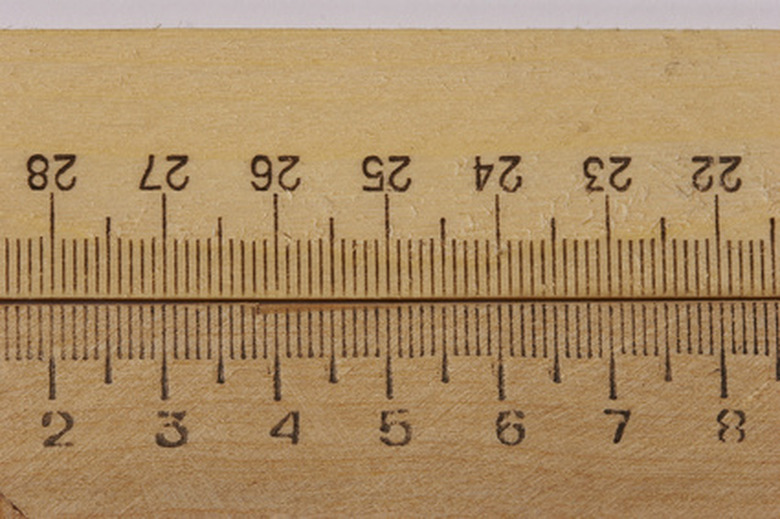How To Calculate Foot Candle
A foot-candle is a unit of measurement used to express the intensity of light illuminating a given area, also known as illuminance. One foot-candle is the intensity of a 1-candlepower light source at a distance of one foot. A foot-candle is calculated by taking into account the power of the light source, also known as luminance, and the distance to the illuminated point. This unit of measure is generally only utilized in the United States and has been replaced elsewhere with the SI unit of measure "lux," equivalent to one lumen per square meter.
Step 1
Construct the formula for light intensity in the units necessary to result in a final measurement in foot-candles. To do this, assume that the light source radiates equal power in every direction from a single point. Therefore, every point at the same distance away from the light source receives an equal amount of light intensity. This is the same as saying that every area on the inner surface of a sphere centered at the light source receives an equivalent amount of light intensity (in power per area). As distance from the light source grows, the interior surface area of this sphere increases, but the power of the light source is unchanged. This leads both to the common-sense notion that the luminescent intensity of a light decreases with distance and an exact mathematical formula for how fast it does so.
\(Light Intensity = Light Source Output / Area\)
Because at a certain distance the light source brightness is spread out over the surface area of a sphere centered at the light source, with a radius equivalent to the distance from the light source, you can replace the general Area term with the formula for the surface area of a sphere:
\(Light Intensity = Light Source Output / (4*π*Distance^2)\)
Finally, use the units of measure necessary to result in a light intensity measured in foot-candles:
\(Light Intensity (ft-c) = Light Source Output (c) / (4*π*distance (ft) ^2)\)
Step 2
Convert the units of any given quantities into the desired units of measure. If a given problem contains quantities for Light Source Brightness or for Distance (our two independent variables) not measured in candlepower or feet, you need to convert them in order to obtain a unit of foot-candles in the final result. Here are some common unit conversions that may be applicable:
1 candlepower = ~12.57 lumens 1 candlepower = ~0.981 candela
1 foot = ~0.3048 meters 1 foot = 1/3 yard 1 foot = 12 inches
Step 3
Plug the given quantities into the formula and use algebra to solve for the unknown variable. Once the output power, or luminance, of the light source is known, dividing by 4π and the distance squared results in the illuminating power of the light source at that distance, in foot-candles.
TL;DR (Too Long; Didn't Read)
After solving for the illuminance at one distance, the inverse square relationship between distance and illuminance means that at twice this distance the illuminance will be reduced by a factor of four, at three times the distance by a factor of nine, and so on.
Warning
If attempting to calculate foot-candle illuminance at a certain distance from a light source, be wary of manufacturer data concerning the wattage of the light source. This may be a measure of the input power of the light, rather than the output luminance.
Cite This Article
MLA
Gray, David. "How To Calculate Foot Candle" sciencing.com, https://www.sciencing.com/calculate-foot-candle-6899966/. 24 April 2017.
APA
Gray, David. (2017, April 24). How To Calculate Foot Candle. sciencing.com. Retrieved from https://www.sciencing.com/calculate-foot-candle-6899966/
Chicago
Gray, David. How To Calculate Foot Candle last modified March 24, 2022. https://www.sciencing.com/calculate-foot-candle-6899966/


